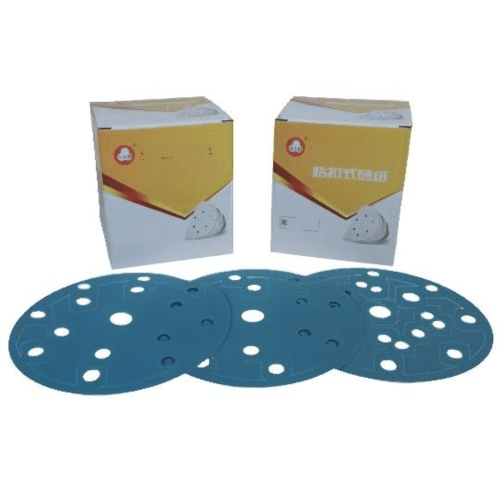The Evolution of Professional-Grade Air-Powered Equipment
The landscape of construction and industrial work has been revolutionized by the advancement of pneumatic tools over the past decade. These powerful air-driven implements have become indispensable for professional contractors who demand reliability, precision, and efficiency in their daily operations. As we look toward 2025, the latest generation of pneumatic tools represents the pinnacle of engineering innovation, offering unprecedented performance and versatility.
Modern pneumatic tools harness compressed air technology more effectively than ever before, delivering exceptional power-to-weight ratios that enable contractors to work longer with less fatigue. The integration of smart features and ergonomic designs has transformed these tools from simple mechanical devices into sophisticated instruments that enhance productivity and job site safety.
Essential Pneumatic Tools for Modern Construction Projects
High-Performance Nail Guns and Staplers
Leading the charge in fastening technology, contemporary pneumatic nail guns have evolved to offer unprecedented precision and control. The latest models feature advanced depth adjustment mechanisms, jam-clearing systems, and selective actuation triggers. Professional contractors particularly appreciate the new generation of framing nailers that combine lightweight magnesium construction with high-capacity magazines, enabling extended periods of efficient operation.
Pneumatic staplers have also seen significant improvements, with new models incorporating tool-free depth adjustment and enhanced safety features. These innovations allow contractors to tackle everything from delicate trim work to heavy-duty sheathing applications with confidence and consistency.
Advanced Air Compressors and Power Distribution
The heart of any pneumatic system lies in its air compressor, and 2025's models showcase remarkable advancements in efficiency and portability. Modern compressors feature smart pressure monitoring systems that automatically adjust output based on tool requirements, maximizing energy efficiency while ensuring consistent performance. Innovative cooling systems and low-noise technology make these units more workplace-friendly than ever before.
Professional contractors now benefit from improved air distribution systems, including self-healing hoses and quick-connect fittings that minimize pressure loss and maximize tool performance. The integration of wireless monitoring capabilities allows real-time tracking of air pressure and system health through smartphone applications.

Specialized Pneumatic Equipment for Diverse Applications
Industrial-Grade Sanders and Surface Preparation Tools
Professional surface preparation has been transformed by new pneumatic sanders that combine powerful material removal with precise control. Advanced dust collection systems integrated into these tools maintain cleaner work environments while protecting operator health. Variable speed controls and ergonomic designs allow contractors to tackle everything from rough lumber to fine finishing work with a single tool.
The latest orbital sanders feature smart sensing technology that adjusts power output based on surface resistance, preventing over-sanding and ensuring consistent results. These innovations have made pneumatic sanders indispensable for both large-scale commercial projects and detailed custom work.
Heavy-Duty Drills and Impact Wrenches
The power and reliability of pneumatic drills continue to make them essential for demanding applications. Modern designs incorporate advanced clutch mechanisms and precision control features that prevent over-torquing while maintaining maximum efficiency. Impact wrenches have evolved to offer multiple power settings and improved accuracy, making them ideal for both assembly line work and construction sites.
These tools now feature enhanced ergonomic designs with vibration-dampening technology, allowing contractors to work longer with reduced fatigue. Smart torque management systems prevent fastener damage while ensuring proper tightening sequences in critical applications.
Maintenance and Optimization of Pneumatic Systems
Preventive Care and Performance Monitoring
Professional contractors understand that maintaining pneumatic tools is crucial for long-term reliability and performance. Modern maintenance protocols now incorporate digital diagnostic tools that can predict potential issues before they cause downtime. Regular inspection points have been simplified with clear indicators and easy-access ports for lubrication and adjustment.
Advanced filtration systems protect tools from contamination, while automated oilers ensure proper lubrication during operation. These preventive measures significantly extend tool life while maintaining peak performance levels throughout the workday.
System Integration and Workflow Optimization
The efficiency of pneumatic tools depends heavily on proper system integration and workspace organization. Modern contractors are implementing modular air distribution systems that allow quick reconfiguration for different job site requirements. Smart pressure management systems ensure optimal air delivery to multiple tools while preventing pressure drops during peak usage.
Workflow optimization now includes careful consideration of compressor placement, hose routing, and tool storage solutions. These systematic approaches maximize productivity while minimizing setup time and maintenance requirements.
Frequently Asked Questions
What advantages do pneumatic tools offer over electric alternatives?
Pneumatic tools typically offer superior power-to-weight ratios, greater durability in harsh conditions, and simpler maintenance requirements compared to electric tools. They also provide consistent performance without the risk of motor burnout and can operate continuously in demanding environments.
How often should professional contractors service their pneumatic tools?
Professional-grade pneumatic tools should undergo daily basic maintenance checks, weekly thorough cleaning, and monthly comprehensive inspections. Critical components should be examined for wear every 100 hours of operation, while complete servicing is recommended every 500 hours or six months, whichever comes first.
What size air compressor is needed for professional contracting work?
Professional contractors typically require air compressors capable of delivering at least 5-10 CFM at 90 PSI per tool. For operations involving multiple tools or high-demand applications, industrial compressors rated at 15-30 CFM or higher are recommended. The specific size depends on the types of tools being used and the nature of the work being performed.


